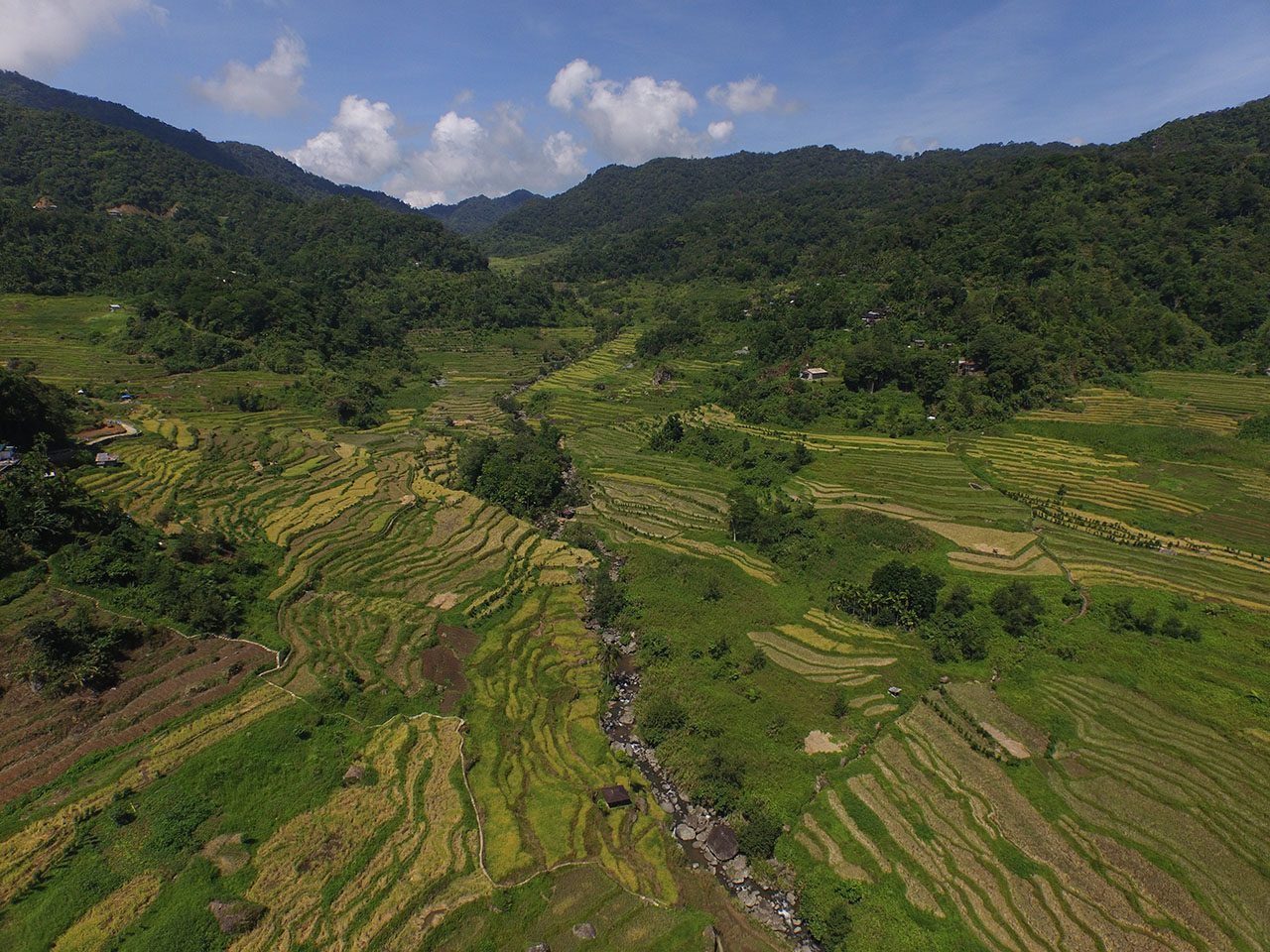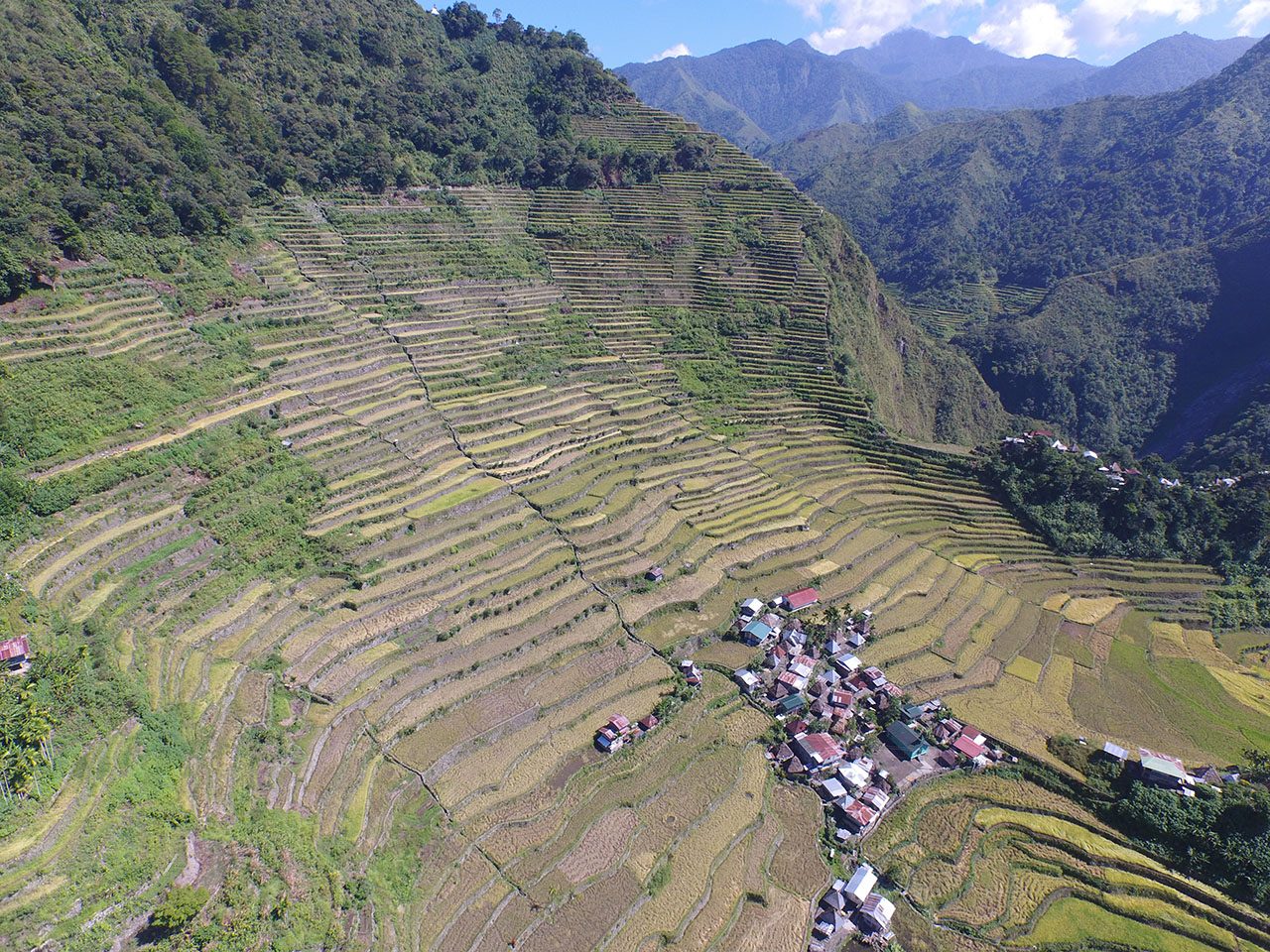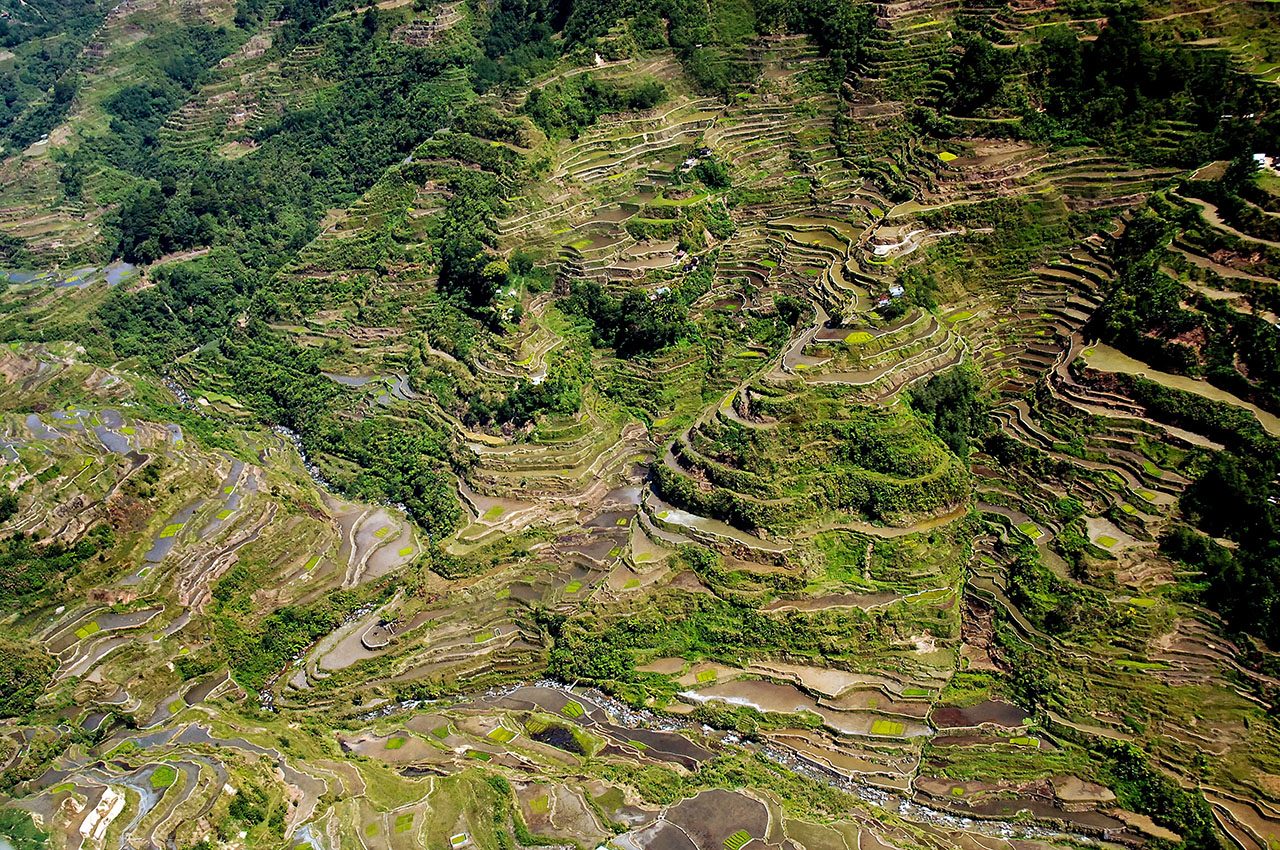SUMMARY
This is AI generated summarization, which may have errors. For context, always refer to the full article.

They grace our P20 bill, take center stage in tourism ads, and form the backdrop of many a souvenir photo. Inscribed on the Unesco World Heritage List in 1995, the Ifugao Rice Terraces of the Philippines are undoubtedly a source of pride for the Ifugao and for Filipinos all over the world. A lot of that pride comes from being told by our textbooks that they are 2,000 years old. But they are not. Does that mean we should be any less proud?
Despite the lack of scientific basis, the “long-history” model, which says the terraces are 2,000 years old, has become a widely-accepted truth. Many also repeat the unsupported claim that the terraces were built by the “second wave” of Malays who went up to the mountains, or the myth that the Chinese had a hand in constructing the terraces. But recent research suggests the oft-repeated narratives are wrong and are rooted in the colonial mindset which sees the Ifugao as incapable of modifying their environment with such sophistication in only a short amount of time.
Recent research suggests the 2,000-year origin narrative is wrong and is colonial in nature. When we say colonial, we refer to a narrative that devalues local realities, imposing instead an outside version of what possibly could have been. Many historians and tour directors romanticize the 2,000-year-old origins that early anthropologists claimed for the terraces. This romanticism perpetuated a historically-flawed narrative of the Ifugao as a people and as a culture. It also reinforced lowland perception of their highland compatriots as being backward and unchanging. In the wider scale of human history, complex agricultural societies developed on to become kingdoms and empires; yet if the Ifugao developed irrigated agriculture 2,000 years ago, does it mean that they didn’t do anything but plant rice for two millennia?
The terraces are the products of a very rich and complex Ifugao culture that resisted the Spanish conquest for more than 200 years. Archaeological digs show they were converted to wet rice as a strategy to consolidate economic and political resources that allowed them to resist the marauding Spanish forces less than 400 years ago. It cemented the social order, unified the Ifugao against invasion, and sealed a social organization that maintained the terraces and preserved these mountain settlements. By insisting on the 2000-year narrative, this important era of colonial resistance and sustained war for independence in Ifugao and the Cordilleras is relegated as minor events in the history of the country.
That is why they qualify for the Unesco World Heritage List. They commemorate the struggle against imperialism and the emergence of self-sufficient, sustainable communities surviving against the odds of a modernist onslaught. That culture persists today in the face of the market economy characterized by SMs, Jollibees and McDonalds. In fact, the rice grown in the terraces is from heritage seed stock and is used to strengthen cultural identity and are important for community rituals.
The terraces are tourist sites today, but the Ifugao persevere to maintain their culture to educate the youth about traditional farming methods, which has shown resilience against droughts and typhoons. In the face of changing climate, these refugia are the hopes for the future of humankind.
Not ‘even a shovelful of soil’
The presently accepted 2,000-year-old model is not based on “even a shovelful of soil,” using Robert Maher’s (1973) words, but it entered the national consciousness when it began to be repeated in schools and then remained as an unchallenged “fact” in textbooks. Connie Bodner (1986), working in another region in the Cordillera (Bontoc), has also strongly argued for the later inception (after AD 1600) of wet-rice cultivation in the region. Her argument, like in the case of Ifugao, is also supported by archaeological datasets. Yet the long-history model persists.
The long-history model is a representative caricature of the uncolonized, isolated peoples, and “original Filipinos” – unsubstantiated by fact and replete with colonial perspectives that portray the Ifugao and Cordilleran peoples as unchanging, backward, primeval Filipino ancestors. This obviously has no place in contemporary scholarship.

Even though the model is problematic and disregards the capacity of the Ifugao to act independently and to make their own free choices, the long-history model continues to be reinforced within Philippine history curricula and larger society to advance a variety of agendas, ideologies, and beliefs. Prime examples are laws that made it illegal to practice swidden farming (kaingin), or deprived them of control over traditional lands above a certain slope threshold. These were predicated on the belief that these groups could not possibly manage their own resources better than the state could.
The widespread way of thinking in which heritage objects of greater age are automatically considered as having greater value (Laurajane Smith, 2006) continues to make the task of changing the minds of scholars, politicians, government agencies, and the general public a challenge.
Science vs agenda
The Ifugao Archaeological Project (IAP), a community-led and collaborative research program of the Save the Ifugao Terraces Movement, University of the Philippines-Archaeological Studies Program, National Museum, and the University of California, Los Angeles, has obtained several robust datasets, which includes radiocarbon dates, archaeobotanical data, ethnohistoric and ethnographic information, and chemical signatures of particular plants.
While dating of the terraces is secondary to what the IAP is trying to achieve in Ifugao, it is undeniable that the datasets point to a later date of construction of the rice terraces. This finding is still particularly contentious, not just because all tourism-related materials have focused on the supposed long history of the terraces, but because it also threatens to upend long-standing notions about the Ifugao and the Cordillerans, and beliefs about antiquity being a substitute for value.
But science does not intrinsically favor any agenda. Scientific knowledge comes from developing a testable model, supporting or disproving the hypothesis with intact and contextual data, and then linking it with how prior explanations were made. The “short history” model of the terraces supported by the IAP’s research is about decolonizing historical narratives, empowering indigenous peoples, and challenging the dominant and traditionally held colonial narratives.

The facts
Believing in the long-history model entails holding the condescending view that the construction of such an intricate terrace system would take a lot of time, since it requires having exceptional knowledge of the landscape as well as significant technical and labor requirements. And this is precisely what pioneer anthropologists said of the Highland Philippines: it would have taken the Ifugao between 2,000 to 3,000 years to construct the terraces because they were using only the most basic of implements. However, contemporary energetics data obtained by the IAP suggests otherwise: 4 experienced terrace builders using only traditional implements can construct an eight-level terraced field within 10 days!
Comprehending local time reckoning and genealogical reconstruction is also invaluable in understanding the Ifugao, since time reckoning is by generation and not by years. Three classic examples that demonstrate the importance of this are the narratives about the origins of the iconic, amphitheater-shaped Batad Rice Terraces, one of the five Unesco World Heritage Site clusters; the construction of a large swath of the Asipulo terrace system; and the community story in Tokak Village, in Namal, Asipulo.
According to a local account, two brothers from Cambulo, a nearby village, discovered the Batad hillside while hunting. One of the brothers started a swidden field and subsequently brought his family to Batad. The terraces there were constructed soon after. It is important to note that this origin narrative has presumably happened within the last 6 generations. The Asipulo terraces, by similar account, were also constructed within the last 3 generations. The Tokak community story revolves around Spanish pressure: village elders mention that their ancestors left Amduntog – a village closer to Spanish-garrisoned Quiangan and resettled in a more interior village, Tokak – to avoid Spanish contact. Their descendants returned to Amduntog after the Spaniards left. To dismiss oral history as a valid source of data is a serious misunderstanding of ethnographic methods, and disrespectful to the local Ifugao perspective as expressed through their community stories.
Following the old adage, the absence of evidence is not evidence of absence; however, any evidence that would support the 2,000-year-old origin theory of the Ifugao terraces has remained completely absent from the 5 major sites (OKV, Hapao, Nagacadan, Batad, and Banaue), and has arguably been discredited by the most recent archaeological and ethnographic data. A comprehensive assessment of archaeological, historical, ethnographic, and spatial data on the origins of the rice terraces was recently published by the Journal of Field Archaeology.
Changing the narrative
There is no question that the monumental Ifugao terraces are an example of humanity negotiating environmental limitations and adapting according to need. The terraces not only commemorate the struggle against imperialism. They also celebrate self-sufficient, sustainable communities for whom wet-rice cultivation is still central to daily life and cultural identity. The rice that the Ifugao grow in the terraces is still from heritage seed stock and is still used for rice wine and ritual. As well, the Ifugao still use cooperation and communal labor to plant, harvest, and process the rice, repair the terraces, and manage the surrounding ecosystem.
Simply put, that the Ifugao rice terraces are a living cultural landscape is what mattered in 1995 when they were first placed in the Unesco World Heritage List. Debates that insist on the long-history model for the terraces only serve to reinforce the exoticism of the Ifugao and romanticize the past. Dating, while important, should be secondary to understanding the cultural context of the terraces. The widely-held belief that the terraces were 2,000 years old was irrelevant then; it is still irrelevant to their continued survival now.
The way mainstream Filipino consciousness imagines the Ifugao in connection with the age of the terraces is what needs to change. Changing the narrative to highlight the recent origins of these marvels of landscape engineering breaks the colonial myth that portrays them as “original Filipinos” of unchanging, backward ways. This empowers Ifugao communities to generate successful heritage conservation programs that communities themselves develop and implement. This also emphasizes the need to recognize indigenous histories, which are neglected in our nationalized history.
So, the next time we hear our friend say that the terraces are the Eighth Wonder of the World, or that it is 2,000 years old, we in the IAP hope that we can do our part in spreading the core of the results of this new research. It is important to correct the wrongs and move forward as a people with fact-based, decolonized knowledge and awareness of our indigenous histories. – Rappler.com
Stephen Acabado is Assistant Professor of Anthropology at University of California, Los Angeles. He directs the Ifugao Archaeological Project and is an advocate of a community-engaged archaeology. He can be reached at acabado@anthro.ucla.edu.
Marlon Martin is the Chief Operating Officer of the Save the Ifugao Terraces Movement, Ifugao, Philippines. He is on the forefront of Ifugao heritage conservation and has spearheaded the establishment of the Indigenous Peoples Education Center in Ifugao. He can be reached at marlon.martin12@yahoo.com.
Add a comment
How does this make you feel?
There are no comments yet. Add your comment to start the conversation.